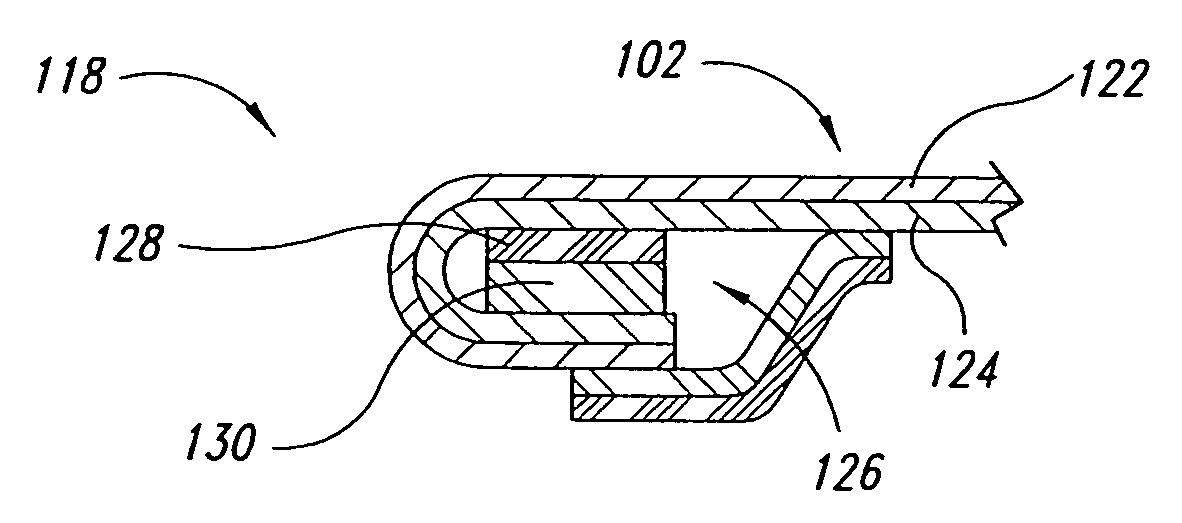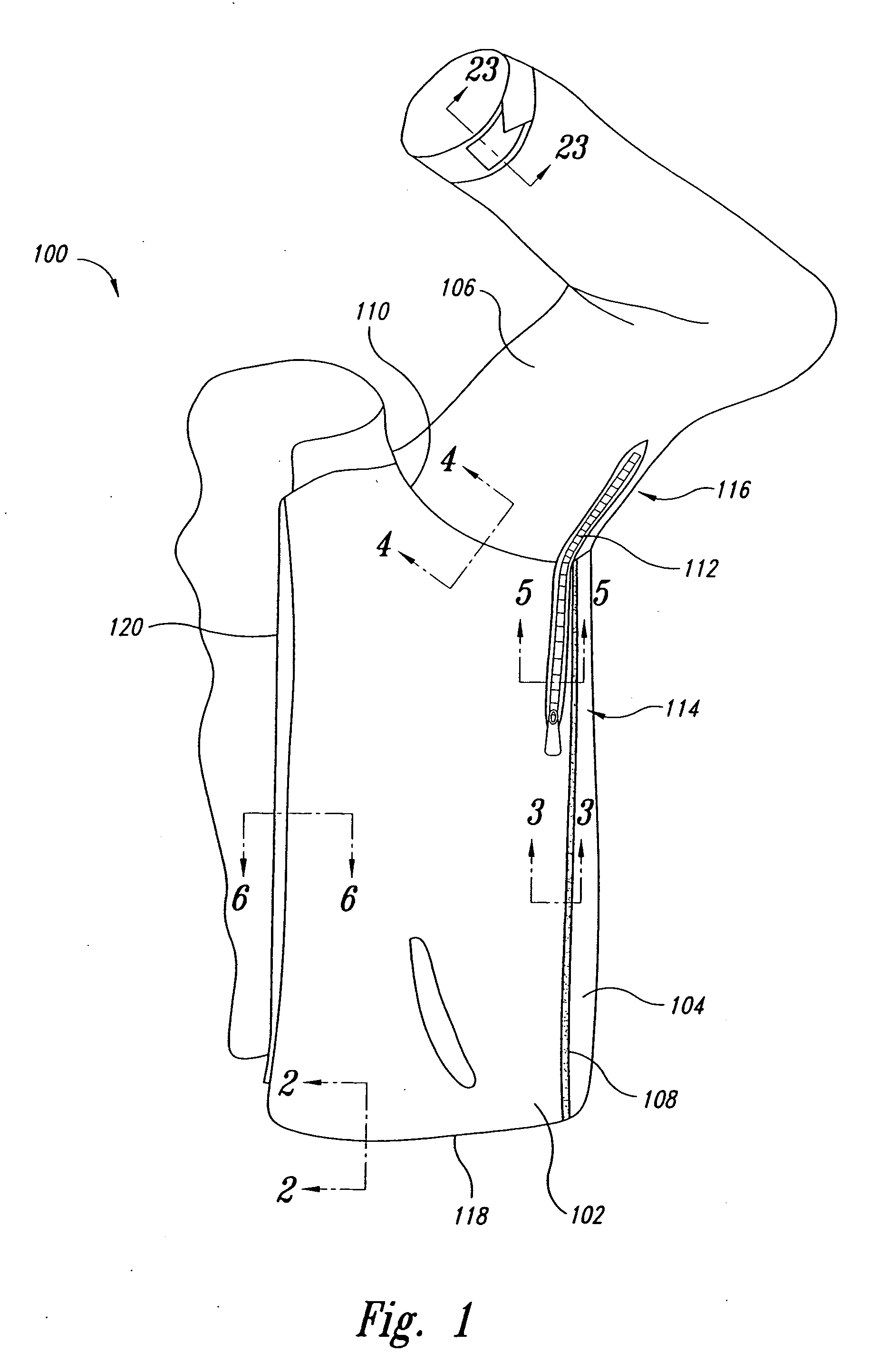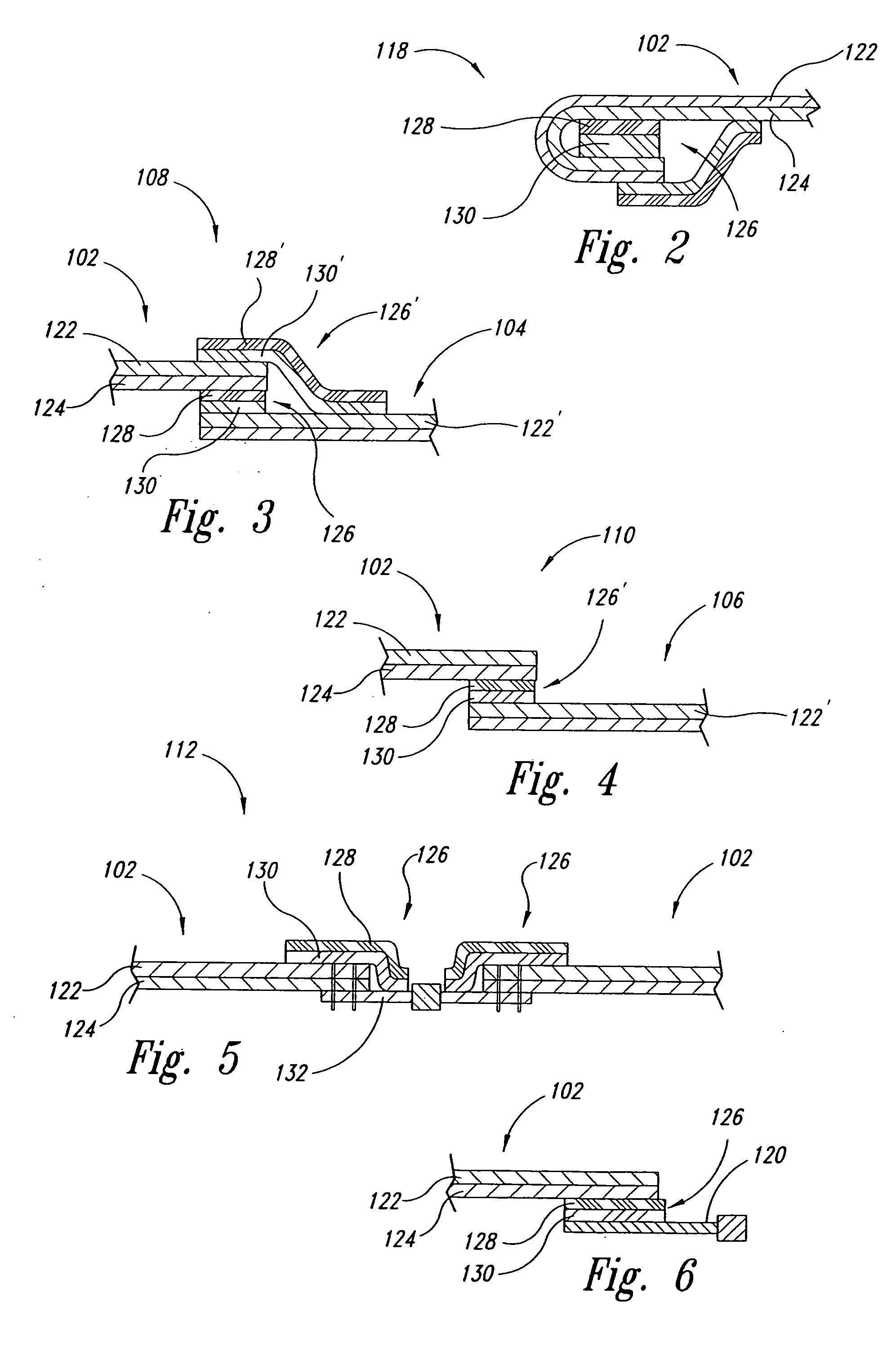Hems, edges, patches and seams for durable, water repellant woven fabric, and methods for making the same
a technology of woven fabric and patching seams, which is applied in the field of woven fabric hems, edges, patches and seams, and methods for making the same. it can solve the problems of affecting the aesthetics of clothing, affecting the choice of fabrics, and affecting the appearance of clothing, etc., and achieves the effects of reducing the melt point, reducing the amount of woven fabric, and high flow ra
- Summary
- Abstract
- Description
- Claims
- Application Information
AI Technical Summary
Benefits of technology
Problems solved by technology
Method used
Image
Examples
example i
FABRICATION EXAMPLE I
Top Covered Lapseam
[0063] A.) Using an appropriate PU laminated waterproof textile, a seam was made by pre-setting Ardmel T023 black laminate tape on the top surface of a fabric edge to be joined using 4 bar pressure at 360 C air temperature and a feed rate of 3.5 meters / minute on an Ardmel Mk.6 rotary pneumatic seam sealing press (available form Ardmel Automation, Glenrothes, Fife. U.K.); the upper fabric was then positioned over the preset tape to form a lapseam and reveal a slightly visible edge of 0.25 to 1.0 mm.; another strip of Ardmel T023 was placed centered over the seam edge to form a cover to the seam edge. The composite was pressed in a flatbed ElectroSeal Versa Sealer pneumatic press at 180 C for 12 seconds at 40 psi cylinder pressure.
[0064] As is shown in the testing summaries provided in the provisional application to which this application claims priority (i.e., Provisional Patent Application No. 60 / 345,757, filed Jan. 4, 2002, which is incorpo...
fabrication example ii
Uncovered Anti-Fray Edge
[0066] The remarkable ability to surround and bind fibers of the Ardmel T023 welting tape is specially utilized in cases where the appearance of the edge of the fabric is highly desirable and may be preferred to the ultimate in antifray durability.
[0067] In this example, the Ardmel Mk. 6 seam sealer was used to set a strip of 13 mm T023 tape flush with the edge of the bottom portion of the intended lap seam with the fabric face upward, the top fabric layer is positioned face down 10 mm from the edge of the first fabric, and the T023 tape was pre-set using 4 bar pressure at 360 C air temperature and a feed rate of 3.5 meters / minute. Subsequently the top layer of fabric was turned over to form the lap seam, using the T023 as a “hinge”. The seam was pressed in a flatbed ElectroSeal Versa Sealer pneumatic press at 180 C for 12 seconds at 40 psi cylinder pressure.
[0068] The resulting lap seam has an exposed fillet of the adhesive layer of the T023 tape visible ...
fabrication example iii
[0069] In this example, Ardmel T014 Clear polymer laminate was adhered to the surface of a fraying and abrasion prone dobby weave fabric. The section of fabric to be protected from abrasion had an overlay of the T014 material positioned directly on its surface and covered by silicone release paper. The assembly was inserted into a flatbed ElectroSeal Versa Sealer pneumatic press at 180 C for 12 seconds at 40 psi cylinder pressure, removed and allowed to cool under random pressure applied by hand.
[0070] As can be seen in the attached photo the penetration of the adhesive is substantial enough to “wet out” and surround the fiber bundles and cancel most of their internal refraction of light, the prior art example shows no such apparent wetting. Cross sections of these textile / polymer composites show the T014 completely embedding the fibers and substantially eliminates fraying at the cut edge, where the prior art adhesive was pulled away by the cutting action of cross sectioning and re...
PUM
| Property | Measurement | Unit |
|---|---|---|
| thickness | aaaaa | aaaaa |
| thickness | aaaaa | aaaaa |
| thickness | aaaaa | aaaaa |
Abstract
Description
Claims
Application Information
 Login to View More
Login to View More - R&D
- Intellectual Property
- Life Sciences
- Materials
- Tech Scout
- Unparalleled Data Quality
- Higher Quality Content
- 60% Fewer Hallucinations
Browse by: Latest US Patents, China's latest patents, Technical Efficacy Thesaurus, Application Domain, Technology Topic, Popular Technical Reports.
© 2025 PatSnap. All rights reserved.Legal|Privacy policy|Modern Slavery Act Transparency Statement|Sitemap|About US| Contact US: help@patsnap.com



